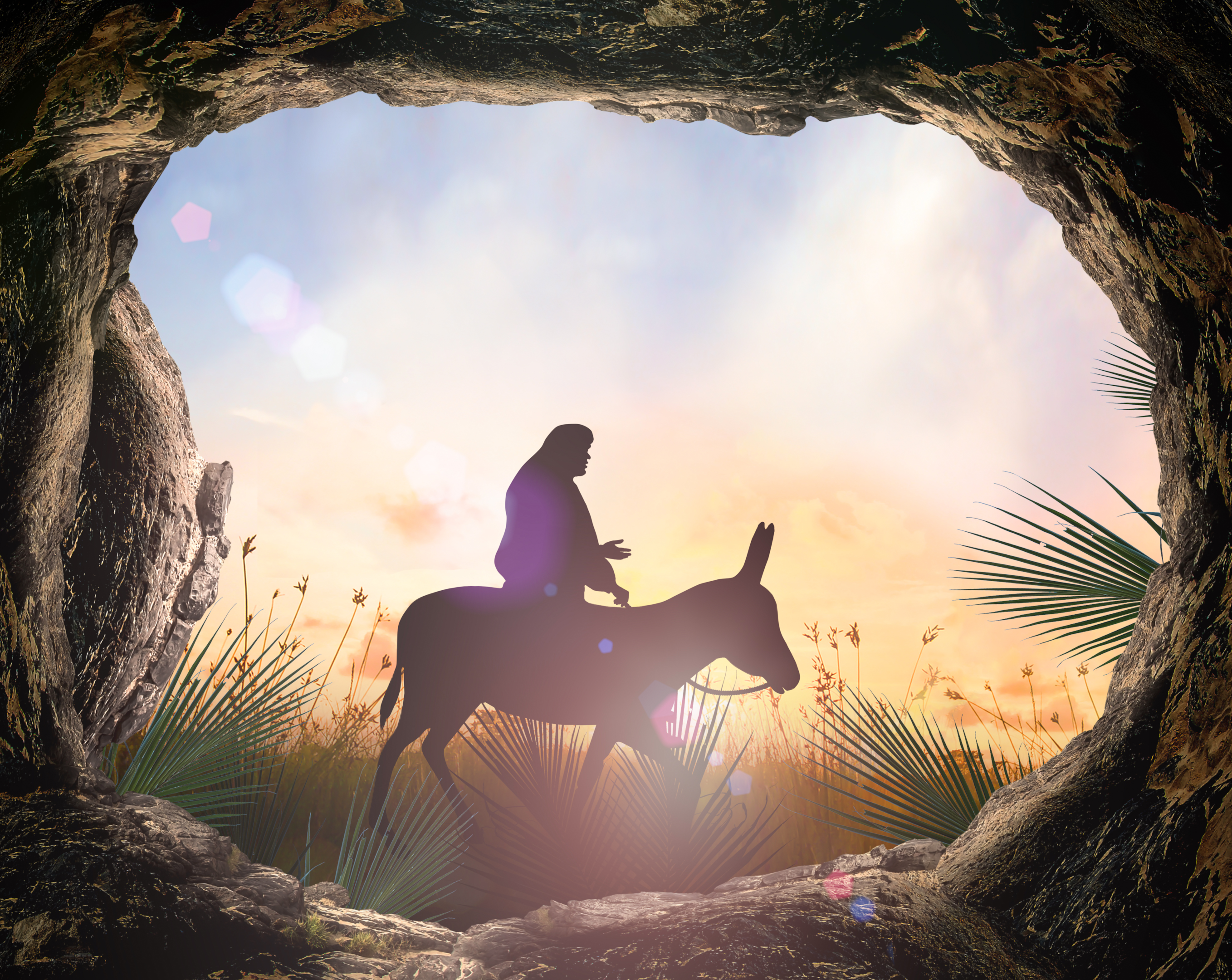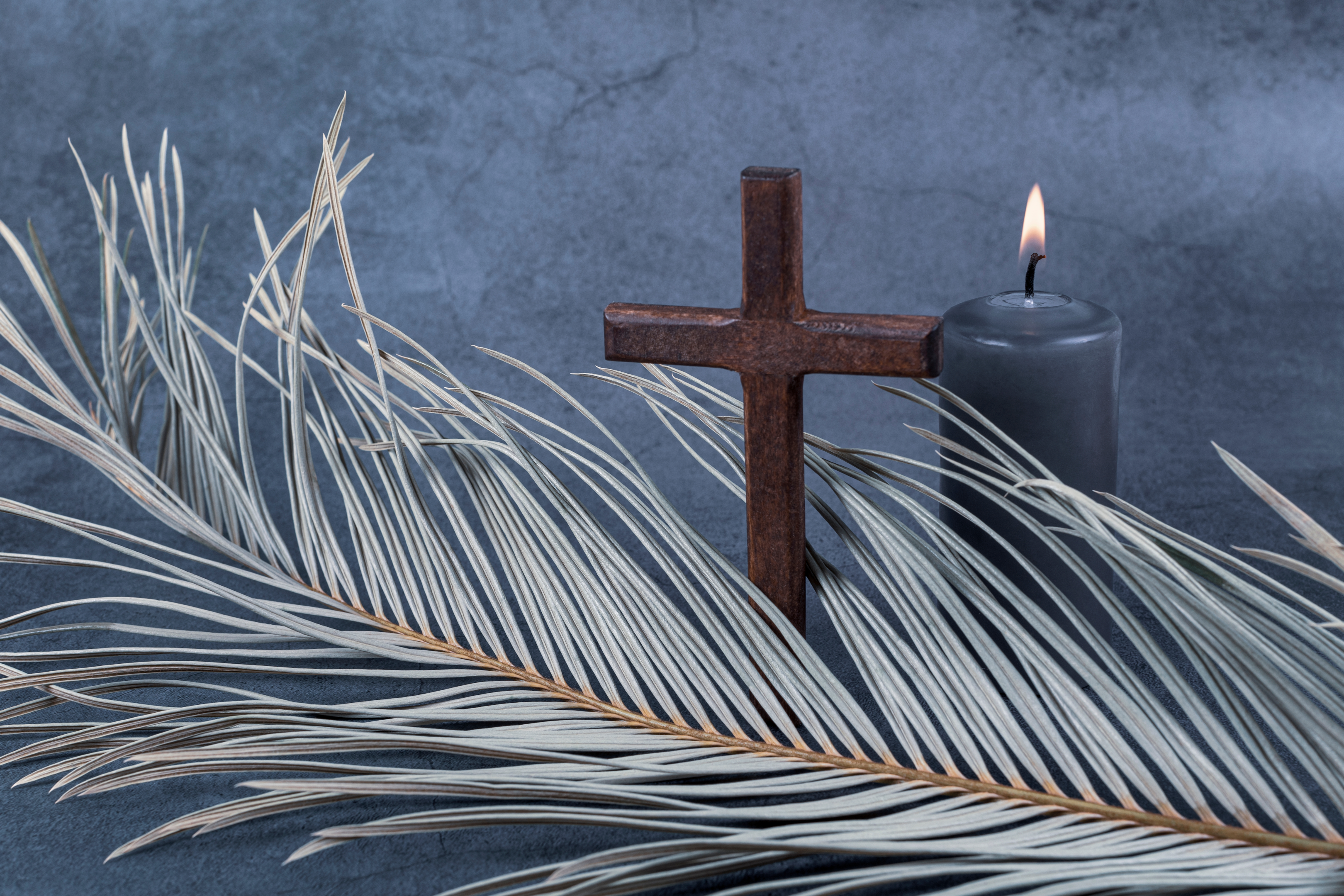Palm Sunday - Jesus' Triumphal Entry into Jerusalem

Palm Sunday - Jesus' Triumphal Entry into Jerusalem

Jesus' Entry into Jerusalem
What Happened When Jesus entered Jerusalem?
Jesus's Kingly Preparation for the Triumphal Entry
Why Did Jesus Preach and Work His Miracles Among the Jews?
Palm Sunday

Introduction
Palm Sunday holds a special place in the hearts of Christians worldwide, as it marks the beginning of Holy Week and commemorates the triumphant entry of Jesus into Jerusalem. In this blog post, we'll delve into the history and significance of this sacred event, explore various customs and traditions surrounding its observance, and reflect on how Palm Sunday remains relevant in our lives today. So join us on this spiritual journey as we uncover the profound meaning and lessons embedded within Palm Sunday.
The History And Significance Of Palm Sunday
Palm Sunday commemorates the triumphant entry of Jesus into Jerusalem, as described in the biblical accounts of the New Testament, and holds both spiritual and cultural significance for Christians worldwide.
Biblical Story Of Jesus' Entry Into Jerusalem

The biblical story of Jesus' entry into Jerusalem is a pivotal event in the life and ministry of Christ, signifying the beginning of his journey towards the cross. As narrated in all four Gospel accounts—Matthew 21:1–11; Mark 11:1–11; Luke 19:29–44; and John 12:12–19—this momentous occurs just days before Jesus' crucifixion and resurrection. Known as Palm Sunday, it marks the commencement of Holy Week, when Christians worldwide reflect on the passionate narrative that led to Christ's sacrifice for humanity.
In preparation for his arrival in Jerusalem, Jesus instructs two disciples to fetch a donkey from a nearby village for him to ride on. This fulfills an Old Testament prophecy in Zechariah 9:9, which says, "Rejoice greatly, Daughter Zion! Shout, Daughter Jerusalem! See your king come to you...riding on a donkey." As he enters the city gates on this humble animal instead of horseback like powerful kings or military leaders would have done so at that time shows how others depict their authority. The huge crowd gathered there quickly recognized him as their long-awaited messianic deliverer and spread their cloaks along with palm branches on the ground before him, proclaiming, "Hosanna!" This triumphant yet modest entrance by Jesus demonstrated his divine nature. It emphasized that he came not only as Israel's King but also as its Savior, who would grant eternal salvation through spiritual means rather than a political force.
Symbolism Of Palm Branches

Palm branches hold significant symbolism within Palm Sunday and the triumphal entry of Jesus Christ into Jerusalem. In ancient times, palm fronds were associated with victory, peace, and eternal life. They were often used to welcome triumphant kings and military leaders as they entered cities after victorious battles or campaigns. This image is particularly fitting for Jesus' triumphal entry into Jerusalem because it highlights his role as a humble yet victorious king who brings peace and salvation.
The use of palm branches during Jesus' famous ride also ties back to Old Testament prophecy in Zechariah 9:9, which foretold that Israel's long-awaited Messiah would enter Jerusalem riding on a donkey while being greeted by rejoicing crowds waving palm fronds. This event clearly fulfilled this prophecy, underscoring the divine nature of Christ's mission on Earth. Additionally, palms have been known to symbolize righteousness (Psalm 92:12), further reinforcing the spiritual kingdom that Jesus came to establish.
In contemporary celebrations of Palm Sunday, churches continue to utilize palm branches during their services and processions as symbols not only of Jesus' victory over death but also as reminders for believers today about living righteously according to God's will in their lives. These tangible symbols serve as powerful visual connections between events from over two thousand years ago and the ongoing journey Christians undertake daily toward eternal life through faith in Christ.
Spiritual And Cultural Importance Of Palm Sunday For Christians
Palm Sunday holds a unique spiritual and cultural significance for Christians worldwide. As the day commemorates Jesus Christ's triumphant entry into Jerusalem, it marks the beginning of Holy Week, ultimately leading to Easter Sunday – the celebration of Christ's resurrection. For believers, Palm Sunday is an opportunity to reflect on Jesus' unwavering commitment to humankind and his determination to fulfill Old Testament prophecies.
The palm branches used during the celebrations symbolize victory, peace, and eternal life in the Christian tradition. These branches remind worshippers of Jesus riding into Jerusalem and serve as a potent reminder that believers can overcome adversity through faith in God. In many cultures, Palm Sunday traditions include processions with participants waving palm trees and fronds while reciting hymns or prayers.
As we approach Holy Week each year, Christians find inspiration in Palm Sunday's story by acknowledging their struggles and embracing the lessons within this decisive moment from Biblical history - humility, perseverance, love for others above oneself - values embodied by Jesus himself when he willingly entered Jerusalem knowing what awaited him there: betrayal outcome rejection before eventual triumph over darkness via resurrection morning
Observance Of Palm Sunday

People worldwide observe Palm Sunday through various customs and traditions, including using palm branches in liturgy and processions honoring Jesus' triumphal entry.
Palm Sunday Customs And Traditions Around The World
Palm Sunday is an important day for Christians; it is celebrated with various customs worldwide. Here are some of them:
1. Palm leaves are woven into intricate designs in the Philippines, forming shapes like crosses and flowers. These designs are then used to decorate churches and homes.
2. In Spain, people celebrate Palm Sunday by reenacting Jesus’ enJesus'to Jerusalem. They use real donkeys and decorate the streets with palms and olive branches.
3. In Ethiopia, Palm Sunday is known as Hosanna, which means “save us." People wear new clothes to church and carry palm fronds as they sing hymns.
4. In Italy, olive branches are often used instead of palms because olive trees are more common in the country. People also make special bread called “palmurel"i” to commemorate the occasion.
5. In some parts of South America, such as Venezuela and Colombia, people create elaborate displays using palms, flowers, stones, and other decorations. These displays can be several feet tall and feature scenes from the Bible.
6. Palm Sunday is known as Willow Sunday in Russia because willow branches are more readily available than palm leaves in the country. People carry these branches in a procession around the capital city to their churches.
7. In many parts of the world, including the United States, churches distribute blessed palm leaves to their parishioners during Palm Sunday services.
Overall comes in the very name comes in the name of the lord; these customs and traditions serve to remind us of the significance of Palm Sunday in our spiritual lives and its connection to our faith's teachings about Christ Love for humanity's son during the Holy Week.
Use Of Palms In Palm Sunday Liturgy
The use of palm branches plays a significant role in Palm Sunday liturgy, representing the triumphal entry of Jesus into Jerusalem. During the service, palms are blessed and distributed to the congregation as a symbol of victory and joy. In some churches, worshippers may process around the church holding their palms while singing hymns.
The palm branches used in Palm Sunday liturgy have historical significance dating back to biblical times. As stated in the Gospel accounts, people spread branches from their cloaks on the road for Jesus as he rode into Jerusalem on a donkey, and they also cut branches from palm trees to wave as he passed by. The use of palms continues today as a reminder of Christ Love and sacrifice.
Palm Sunday liturgy is not just about waving palm branches but is an opportunity to reflect on one's spiritual journey during Holy Week. It allows us to consider what kind of king we want Jesus to be in our lives – one of king Jesus, who leads us towards eternal life, or one king Jesus, who serves our earthly desires? Through this reflection, we are reminded that our call is to worship Christ and follow his example by taking up our cross daily and following him (Luke 9:23).
Palm Sunday Processions
Palm Sunday processions are a significant part of the day's observance in many Christian communities. Here are some things to know about these processions:
- Processions typically begin outside the church building, with a large crowd of participants holding palm branches and singing hymns as they walk.
- In some places, the palms may be shaped into elaborate designs or crosses.
- The procession then moves inside the church, where the service continues.
- Some churches hold special services for Palm Sunday, such as a blessing of palms or reading the Passion narrative.
- In some Latin American countries, it is customary to hold reenactments of Jesus' enJesus'to Jerusalem during the procession.
- The symbolism of the palms is emphasized during the procession, with many participants waving their branches in unison and laying them at the feet of statues or icons within the church.
Reflection On The Relevance Of Palm Sunday Today
Palm Sunday remains relevant today as it serves as a reminder of Christ's love and sacrifice, encourages self-reflection during Holy Week, and connects to the celebration of Easter Sunday.
Reminder Of Christ Love And Sacrifice
Palm Sunday is a solemn reminder of Christ's love and sacrifice. As Jesus rode into Jerusalem on a young donkey, the crowds hailed Him as their king and Savior. This event marked the beginning of Holy Week, where we reflect on Christ's Love to the cross.
In modern times, Palm Sunday is a reminder that Christ's not of this world. Instead, the twelve disciples of Jesus came to establish a spiritual kingdom that transcends earthly power and systems. By sacrificing Himself for our sins, He showed us that true leadership involves serving others rather than seeking personal gain or glory.
As we observe Palm Sunday today, let us remember that Christ's Love calls us to strive for humility and selflessness in all aspects of our lives. Let us recommit ourselves to following His lead in nurturing loving relationships with those around us and working toward justice and peace in our communities.
Examination Of One's Own One'situal Journey During Holy Week
Holy Week is a time of reflection and introspection for Christians worldwide. It is an opportunity to examine one's own spiritual journey and deepen one's faith in Christ. During this week, we are reminded of Christ Love on the cross and his immense love for us.
As we reflect on our own spiritual journey, we can ask ourselves questions like: How have I grown in my faith over the past year? What areas of my life need more attention and focus? Have I forgiven those who have hurt me or caused me pain? These questions help us to identify areas where we need to improve and grow spiritually.
During Holy Week, many Christians participate in traditions like fasting, prayer, almsgiving, and attending church services. These practices help us connect with God deeper and prepare our hearts for Easter Sunday - the celebration of Christ Love to the sacrifice that lead to his death. Overall, examining our spiritual journey during Holy Week helps us to strengthen our relationship with God and live more fulfilling lives as His followers.
Connection Between Palm Sunday And Easter Sunday
Palm Sunday marks the start of Holy Week, leading to Easter Sunday. It is a day when Christians remember Jesus' trJesus'nt entry into Jerusalem, riding on a donkey and being greeted with palm branches by the crowds. This momentous event foreshadowed his ultimate sacrifice for humanity, as he would be crucified and resurrected.
Easter Sunday celebrates Jesus' reJesus'tion from the dead three days after his crucifixion. It is one of the most important events in Christianity, as it signifies that believers are granted eternal life through faith in Christ resurrection. Palm Sunday serves as a reminder that despite Jesus' huJesus'ntry into Jerusalem on a donkey, he was indeed anointed king and Savior by God. The connection between Palm Sunday and Easter Sunday underscores this message of hope and salvation for all who believe in Christ Love.
Conclusion
In conclusion, Palm Sunday is a significant event for Christians commemorating Jesus' trJesus'nt entry into Jerusalem. The use of palm branches and the crowds shouting "Hosanna!" signify"Christ Love and coming kingdom.
As we observe the Passover festival with customs like processions and liturgy, let us also reflect on our spiritual journey during Holy Week. We are reminded of Christ Love as he comes in the name of Passover Lamb, leading up to Easter Sunday, where he conquers death and provides eternal life. Let us rejoice greatly in the name of the Lord in who comes in the name of the Lord!
https://encounterchurchfw.org/blog/why-did-jesus-ride-a-donkeyhttps://encounterchurchfw.org/blog/why-did-jesus-ride-a-donkey
Jesus entering into jerusalem | hebrew word |chief priests father david
https://encounterchurchfw.org/blog/mat-21-1-6
https://encounterchurchfw.org/blog/5-things-about-palm-sunday-that-remind-us-christ-is-king
https://encounterchurchfw.org/blog/where-did-jesus-live-a-historical-journey
https://encounterchurchfw.org/blog/uncovering-the-meaning-of-jesus-fasts-in-the-bible
https://encounterchurchfw.org/blog/how-many-prophecies-did-jesus-fulfill-unveiling-the-number-of-old-testament-prophecies-fulfilled-by-jesus
https://encounterchurchfw.org/blog/a-comprehensive-guide-to-jesus-parables-in-the-new-testament
